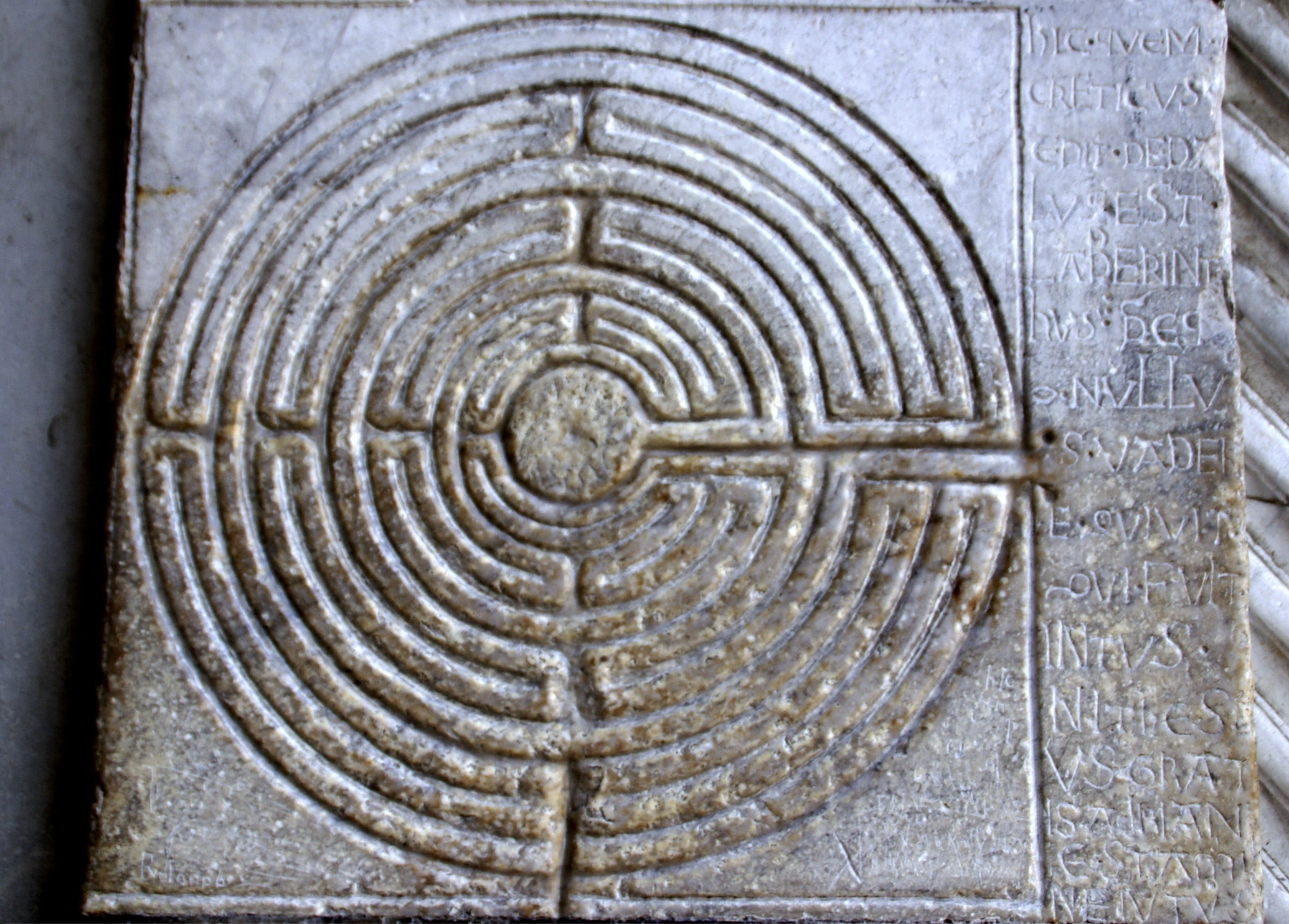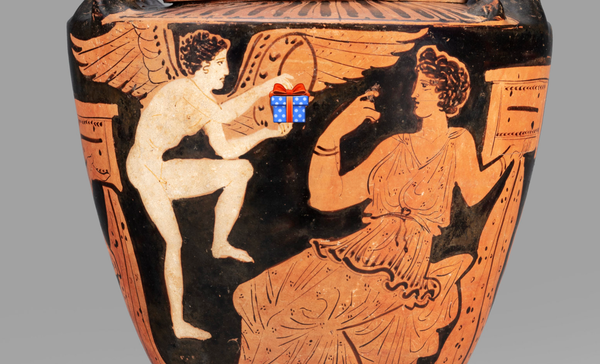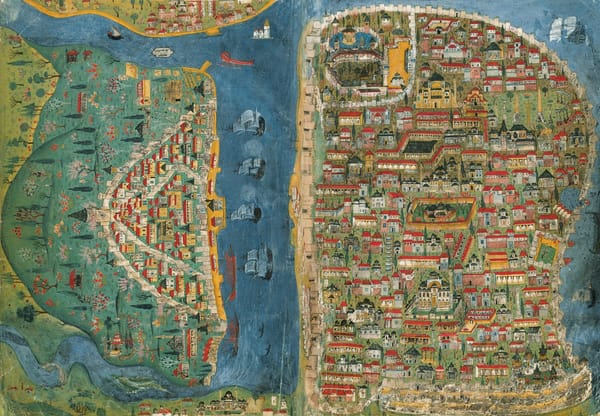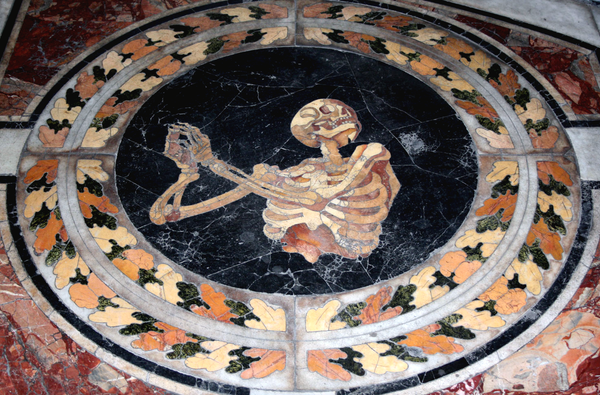Pasts Imperfect (9.11.25)
This week, scholar of early Christianity and series editor Andrew Jacobs discusses a new book, Magic and Heresy in Ancient Christian Literature.
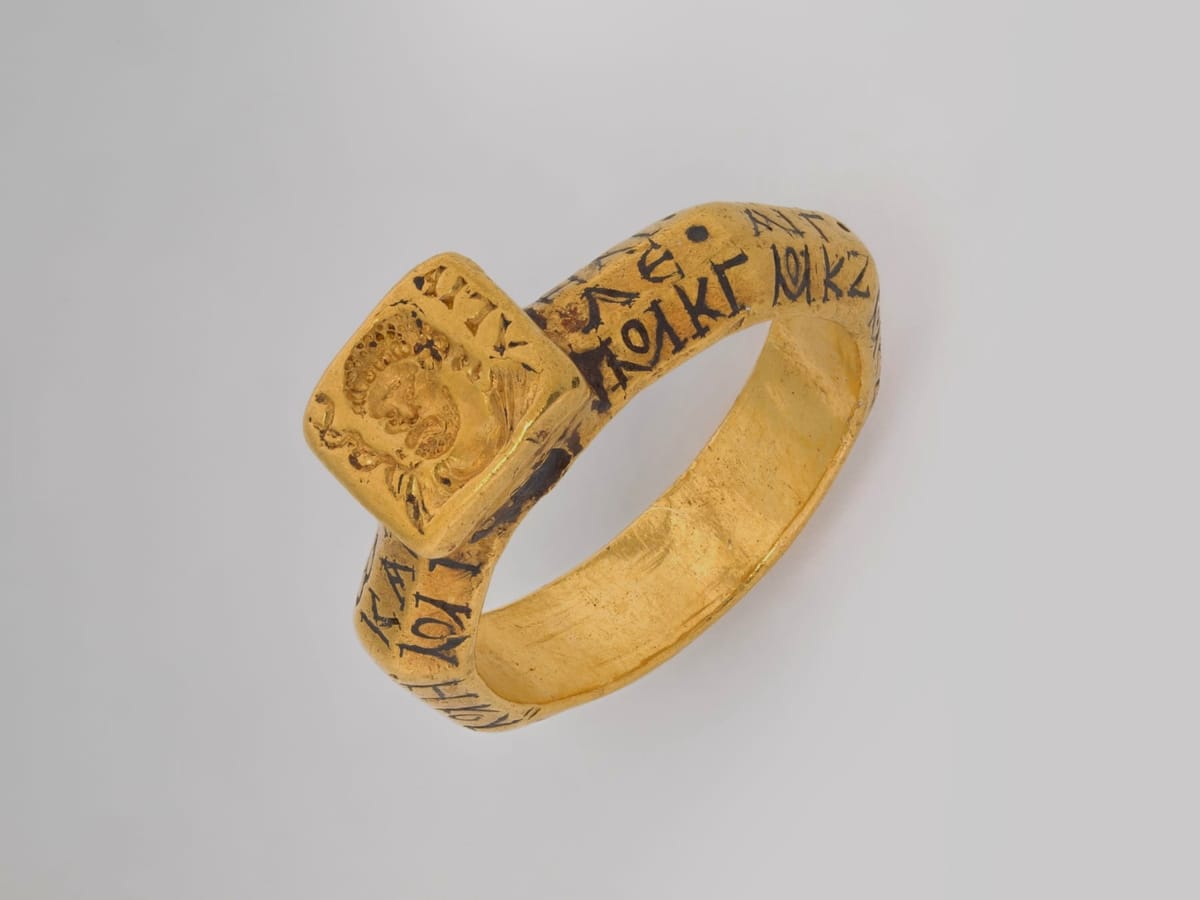
This week, scholar of early Christianity and series editor Andrew Jacobs discusses a new book, Magic and Heresy in Ancient Christian Literature. Then, non-invasive tech help unfurl Buddhist scrolls and visualize an ancient Japanese spear, a new stucco cross reveals a late antique monastery in the United Arab Emirates, excavations under the Al-Aqsa Mosque may be destabilizing Islamic cultural heritage, a new documentary creates an AI Herod (and doesn't tell the scholars that helped with the documentary), and a little something for the horse girls. In the face of threats to religious studies programs across the country, this issue underscores that studying global religions is essential to understanding the world, its cultures, and the tense political climate of the present.
Dischenchanting Empire by Andrew Jacobs
How did magicians come to inhabit the same category as heretics? How do religious empires weaponize, transform, and erase local difference and diversity? How do empires reshape their subjects’ understanding of the world and narrow their capacity to incorporate and acknowledge difference and diversity? These are timely questions, indeed, and ones that Shaily Shashikant Patel’s new Magic and Heresy in Ancient Christian Literature tackles head-on. In a minigraph that spans over 400 years, she explains how these questions informed the very definition of early Christian identity. The Elements in Religion in Late Antiquity series are minigraphs designed to introduce novice readers to key topics and cutting edge research in the field. For Patel, she wishes to address how the categories of magic and heresy became one.
“The title of this Element is deceptive,” Patel warns at the outset. On one level, she delivers exactly what the title promises: she explains how, over the first four centuries CE, a series of Christian writers and thinkers reconfigured the “profoundly unruly” categories of magic and heresy in order to equate them with each other and oppose them to a unified bulwark of Christian orthodoxy. In four tightly argued sections, Patel looks at Christian texts on heresy and on magic and shows how, over time, these concepts simplify and coalesce to allow for the construction of orthodox Christianity. Each section concludes with a “case study” (Acts of the Apostles; Irenaeus of Lyon; Hippolytus; and Eusebius of Caesarea) that illustrates this convergent progression.

In the first century, magic and heresy appear in sporadic, inconsistent ways to create a nebulous cadre of outsiders to the ritual and theological norms of Jesus-followers. By the second century, these outsider labels more regularly coincide, particularly in the nascent genre of heresiology: catalogues of religious deviance meant to shore up the eternity of orthodoxy and create space to imagine and locate religious others. The figure of Simon of Samaria, extracted and extrapolated from Acts of the Apostles, first appears as the paradigmatic “magician-heresiarch,” challenging Christian truth with ritual blasphemy.
By the third century, Patel explains, magic has become a political hot button as various socioeconomic crises lead the Roman state to ramp up the criminalization of magic. Christians facing accusations that their “wonderworking” founders and heroes are, in fact, criminal magicians, work overtime to collapse the deviant otherness of heresy and the criminal malfeasance of sorcery: both are and always have been by definition external to Christianity. Magic goes from being opposed to miracle to being opposed to orthodoxy, bringing its sinister ritual and moral associations into alignment with orthodoxy’s other opposite: heresy.
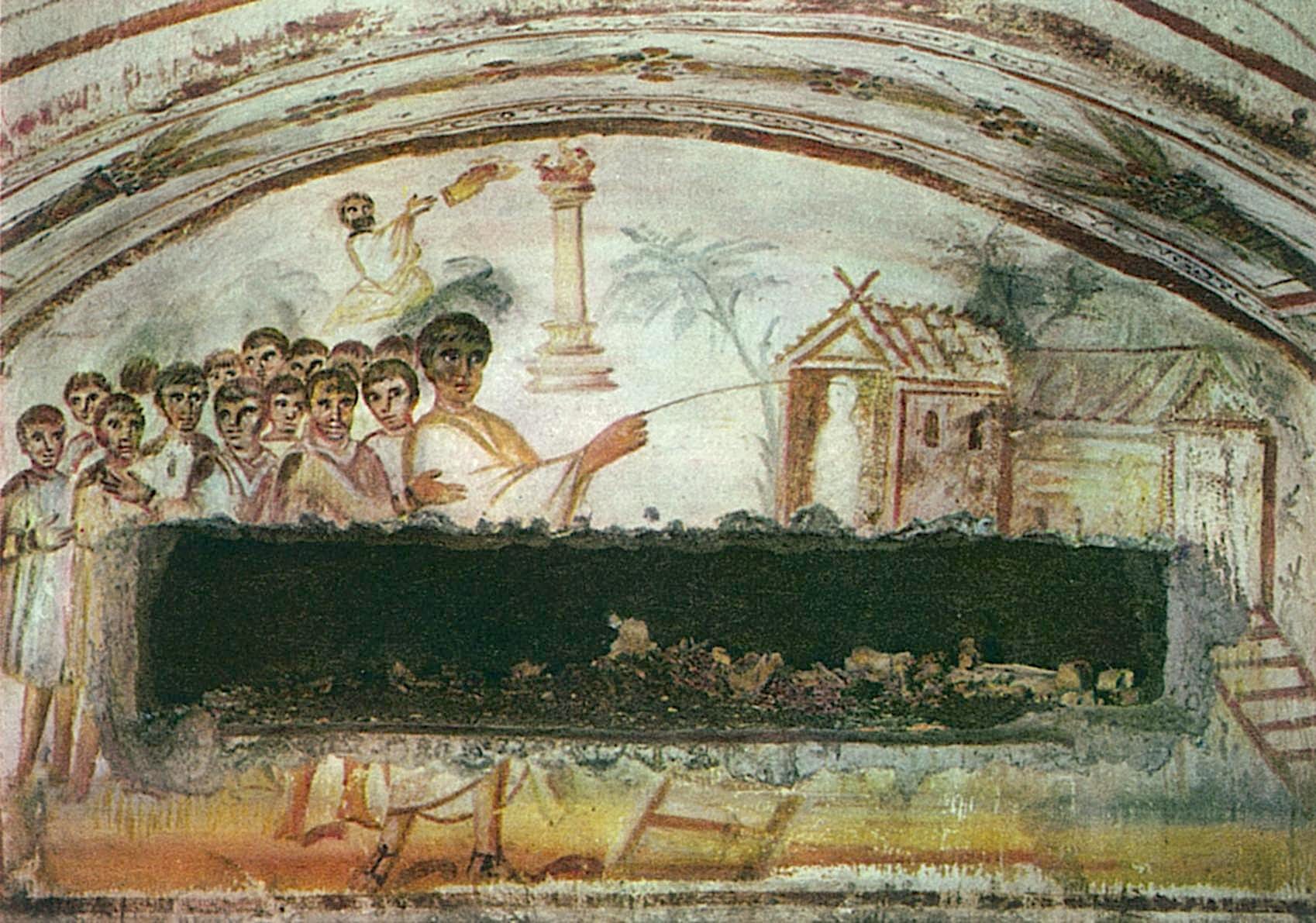
By the fourth century, magic and heresy are “totalizing” concepts, that is, ideas that subsume all otherness and difference within their fathomless frontiers: Judaism is magic; paganism is magic; heresy is magic; magic is the source and manifestation of heresy and so all Christian and non-Christian difference is heresy, too. When John Chrysostom preaches against “Judaizing Christians” in the late fourth century, we see clearly the “rhetorical sleights of hand” that condense religious otherness: anti-Judaism, heresiology, and rejection of magic operate simultaneously. The result is rhetorical and, we might easily imagine, literal violence. A Christian under the Roman empire is now asked to look out into the world and divide everyone they see into two camps: the faithful and the orthodox versus the heretical and magical. The ritual, moral, and ideological collapse of the Other is complete under Christian empire.

The collapse of heresy and magic within Christianity during its formative centuries is, as Patel warns, deceptively simple. And while readers may be drawn in by buzzy concepts like “magic” and “heresy,” the true target of Patel’s analysis is more profound. She ponders how when religious empires weaponize, transform, and erase local difference and diversity for their own ends, it can tell us a lot about how nuance and difference are removed for the sake of conformity. How do empires reshape their subjects’ understanding of the world and narrow their capacity to incorporate and acknowledge difference and diversity? These are timely questions, indeed.
Lest we think we disenchanted children of the Enlightenment are free of this repressive impulse, Patel warns, “The violent legacy of magic-heresy did not end with the Renaissance.” While Patel traces the convergence and sharpening of magic and heresy within late ancient Christian texts, she also suggests how this new understanding of religion, power, and difference resonates far beyond literature, antiquity, and Christianity. (It might help readers to envision every word of Patel’s title in scare quotes.)
When imperial missionaries in the nineteenth century processed colonized landscapes into intellectual fodder for the imperial center, they had the magic-heresy model from late antiquity readily at hand. Moreover, the genesis of our modern, Western concept of “religion” is deeply indebted to this heresiological, anti-magical discourse, which continues to subsume definitions of religion and religions under a tacit, totalizing rubric of imperialized Christian orthodoxy.

Patel is insightful and incisive in her diagnosis of the imperial “epistemicide” that reduced the complexity and diversity of local knowledges to a highly disciplined and “totalized” landscape of orthodox power. She is also cognizant of the long shadow cast by these acts of destructive knowledge and power. She is not, however, without hope for the future. Citing the way Yvonne P. Chireau’s work on African American Conjure traditions disrupts “reigning paradigms for magic and religion,” Patel counsels the tried and true decolonial tactic of reading against the grain:
What if we refuse the totalizing tactics of our sources?
Once we view the processes of imperial knowledge-making as processes we can envision alternate processes, resistant ways of thinking, beyond the imposition of empire’s truths. We cannot, Patel acknowledges, undo the legacies of violence enacted by this magic-heresy conflation, but we can perhaps imagine a new world of possibility beyond them.
Andrew Jacobs is an advisor and lecturer at the University of Virginia and edits Cambridge University Press's Elements in Religion in Late Antiquity; for more information see his website: andrewjacobs.org.
Public Humanities and a Global Antiquity
Classicist Maximus Planudes, an adjunct who goes by a pseudonym, has published a learned rejoinder to the Antigone Journal piece by Solveig Gold and Joshua Katz regarding their "defense of philology." You can read Planudes' response here.
The future of classical studies depends not on resolving false binaries between “traditional” and “critical” approaches, “good” and “bad” philology, but on cultivating methodological sophistication: the ability to deploy multiple interpretive frameworks responsively and self-consciously. I hope that we can move beyond reductive conceptions to open space for more productive dialogue. I hope we can seee how different methodological approaches can strengthen each other in service of cultivating our garden and regrowing the perennial ancient Mediterranean world through rigorous, collaborative, and critically engaged scholarship.
In ArtNet, reporter Min Chen covers the Ethnologisches Museum of the Staatliche Museen zu Berlin use of non-invasive X-ray tomography techniques to "unroll" three small Buddhist scrolls from Mongolian shrines called gungervaas, which contain dharanis (spell scriptures). The results are published in a new, open access article in the Journal of Cultural Heritage. And over at Japan’s Okinoshima Island, The Asahi Shimbun reports that there is a new project currently analyzing 4,200 metal objects from the sacred site using X-ray and CT scanning. Researchers examined a spear tip from the late sixth century to early seventh century CE that has intricate designs, "underscoring the importance of Yamato Dynasty [250 CE - 710 CE] rituals on the sacred island of Okinoshima, researchers said."
Analysis of a gilt bronze spear sheath unearthed at Japan’s sacred Okinoshima Island, a site for hallowed rituals during the country’s Yamato polity, revealed an iron spear with an intricate pattern. archaeology.org/news/2025/06/18/x-rays-reveal-intricate-designs-on-1100-year-old-japanese-spear/
— Archaeology Magazine (@archaeologymag.bsky.social) 2025-06-26T12:02:30.374Z
The New Arab reports that the Palestinian Jerusalem Governorate credibly accused Israeli archaeologists of carrying out destabilizing excavations under the Old Jerusalem courtyard of the Umayyad era Al-Aqsa Mosque that is further damaging the Islamic cultural heritage at the sacred site. Since at least 2023, the Israeli government has held cabinet meetings in the tunnels underneath the mosque. International archaeologists note that this can destabilize the building's foundation. Al-Aqsa Mosque is one of the holiest sites in Islam.
LiveScience reporter and bioarchaeologist Kristina Killgrove has an article on the newly discovered plaster cross from Sir Bani Yas Island in the United Arab Emirates (UAE). In a video, the archaeologists note that this has allowed for the nine courtyard houses discovered in 1992 to be confirmed as 8th century CE living quarters for monks attached to a late antique monastery. "With that cross, 'we have now proved these houses were part of a Christian settlement,' [archaeologist Maria] Gajewska said in a video. As Killgrove notes, archaeologists believe that both Muslims and Christians lived on the island, but that the monastery was later abandoned in the 8th century CE.
Early Medieval Cross Discovered in UAE. www.medievalists.net/2025/08/earl...
— Isabelle Marie (@isabellemarie.bsky.social) 2025-08-27T16:26:35.509Z
Let's check in with some public scholars. At the Harvard Crimson, staff writer Jina H. Choe reports on Harvard's big win in court regarding federal funding last week. Latin literature expert Richard Thomas, who is also a member of Harvard AAUP’s executive committee, weighs in on the case and the cautious optimism on campus. And in podcast news, Mary Beard and Charlotte Higgins have a new podcast called Instant Classics, while Rafe Neis and Gilah Kletenik have a new podcast on ancient and modern Judaism called ADERABA: Jewish Studies on the Contrary. As Neis remarks to PI, "The first episode treats questions about transness, arguments of we've always been here, and ancient sources."
AI is perniciously modifying the way we read and view history. The new Killer Kings documentary worked with a number of scholars in order to bring King Herod (r. 37-4 BCE) back to life. Unfortunately, they didn't tell Katie Turner, an independent scholar who appeared in the series and is known for her precise analysis of clothing and dress in the time of Jesus, about their inaccurate AI reconstructions. As Turner notes to PI, "You can see the Temple in Jerusalem, and the High Priest, appearing in a manner reminiscent of a Roman Catholic mass (in both the Priest’s vestments and in the inclusion of a church altar). They [also] include images that look like Roman-era frescos of Herod and his family" but are AI generated rather than historical paintings. We are all for public scholarship, but media producers have to listen to academic guidance when doing historical reconstructions. Students are not generally able to tell the difference between actual ancient world art and the images conjured by AI.

From Peru's ancient city of Caral, 5,000-year-old toad statues report on the climate change that ended their civilization. The amphibians represent fertility and were commonly worshipped after periods of drought; skeletal remains found nearby reflect the severe malnutrition of the city's inhabitants at the archaeological site of Vichama. (You know, I'm wondering if there are some amphibious deities I could start appealing for our present climate disaster.)
Martin Fackler and Ko Sasaki at the New York Times have created a brilliant visual essay on Noh, the ancient Japanese theater form. On the island of Sado, inhabitants dedicate their festivals to preserving the art on its 34 stages.
“Noh is still a living culture here,” said Ichiji Kouzu, 80, a teacher of the drama form on the island. “But this is the last place.”
Y'all, maybe I've absorbed too much Chinese soft-power propaganda in my life, because I felt extremely righteous when I read that Venice's famous winged lion in St. Mark's Square may have been an Italian remix of a Chinese classic. Some good old-fashioned archaeology has revealed that the lion has "Lower Yangzi origins" in its bronzework – plus, let's be honest, what Venetian lion would have horn removal scars??

And this one's for the horse girls: how, indeed, did we come to ride horses in the first place? Was it as easy as lassoing the friendliest wild horse's head and galloping off into the sunset? DNay! (Neigh! I'm not sorry.) It was selective breeding according to a new genetic analysis.

New Ancient World Journals by @yaleclassicslib.bsky.social
Arethusa Vol. 58, No. 3 (2025) #openaccess NB Tomáš Vítek "Heraclitus's Psyche: The First Centre of Personality?"
Classics Ireland Vol. 31 (2024) #openaccess Graeco-Roman Influences in Irish Visual and Material Culture
International Journal of the Classical Tradition Vol. 32, No. 3 (2025)
Journal of Late Antiquity Vol. 18, No. 2 (2025)
Mnemosyne Vol. 78, No. 5 (2025)
Rivista di Studi Fenici Vol. 52 (2024) #openaccess
Anatolian Studies Vol. 75 (2025)
Near Eastern Archaeology Vol. 88, No. 3 (2025) Megiddo, the Mother of All Tells Part 2, The Iron Age
Archiv für Geschichte der Philosophie Vol. 107, No. 3 (2025) #openaccess
Centaurus Vol. 66, No. 4 (2024) Paper, Metal, Glass: Materials and their Meaning in Pre-Modern Science
Dao Vol. 24, No. 3 (2025)
Epoché Vol. 30, No. 1 (2025)
Polis Vol. 42, No. 3 (2025)
Church History Vol. 93, No. 4 (2025) NB "Select Roundtable on Peter Brown, Journeys of the Mind"
Eastern Christian Art Vol. 13 (2023-2024)
Gnosis Vol. 10, No. 2 (2025) Manichaica-Judaica-Gnostica 2: Global Entanglements
The Journal of Ecclesiastical History Vol. 76, No. 3 (2025) NB Eusebius Essay Prize: Sofia Puchkova "The Womb of Flame: The Pre-Christian Origins of a Greco-Syrian Baptismal Metaphor"
Novum Testamentum Vol. 67, No. 4 (2025)
Journal of the Australian Early Medieval Association Vol. 20, No. 2 (2024)
Florilegium Vol. 38 (2021)
Arheologia = Археологія No. 3 (2025) #openaccess
European Journal of Archaeology Vol. 28, No. 3 (2025)
Digital Scholarship in the Humanities Vol. 40, No. 3 (2025)
Workshops, Lectures, and Exhibitions
On September 24, 2025 at 11:45am EST, the Gilder Lehrman Center for the Study of Slavery, Resistance, and Abolition at Yale will host Elizabeth Griffith discussing her book project "European Slavery from the Fall of Rome to the Rise of the Transatlantic Trade: The British Isles"
Halloween is coming! On October 29, 2025 at 8:00 pm - 9:30 pm GMT, Tanika Koosman will discuss "Ancient Greco-Roman Werewolves and the Posthuman Imagination: Finding the Hum(an)imal" on Zoom for the Viktor Wynd Museum in London. "In returning to the ancient materials on man-to-wolf transformation, this lecture will discuss the advent of the posthuman–and prove that it has existed for much longer than it has been recognised." Grab your Petronius & sign up here.

